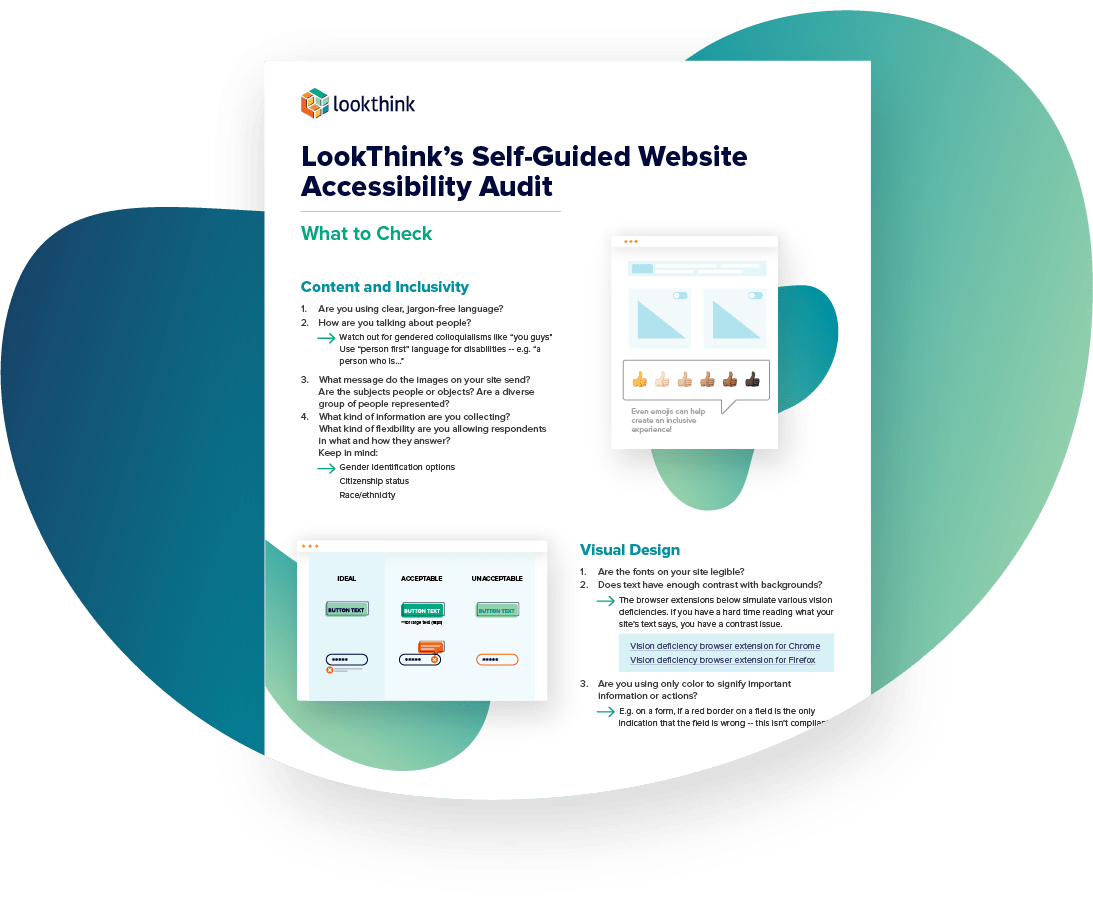To explain what an accessibility audit really is, first we need to dive into the definition of accessibility: the quality of being able to be reached or entered. When we talk about website accessibility, we are not just talking about the ability to open a webpage and "access" it. Accessibility is the ability for anyone, regardless of handicaps or system preference, to have the same experience on the web. When you use a screen reader to view a website, dependent on the level of accessibility of that website you might have a very different experience than someone who is reading the content of the site with their own eyes. This, of course, should be very important to your business.
"The power of the Web is in its universality. Access by everyone regardless of disability is an essential aspect."
-Sir Tim Berners-Lee, Inventor of the World Wide Web
Examples of disabilities that web accessibility supports are:
-
Auditory
-
Cognitive
-
Neurological
-
Physical
-
Speech
-
Visual
Web accessibility also benefits users on different devices; older people with changing abilities from age; temporary disabilities like a broken arm; situational disabilities (like bright sunlight or an environment where they cannot listen to audio); and users who have a slow internet connection.
With this definition of accessibility, we can explore the idea of an accessibility audit. A website accessibility audit is a deep examination into the accessibility of a website by a third party or by a member of the existing organization. As a person performing an accessibility audit, you are trying to determine how well your product supports the needs of web users with disabilities. These accessibility protocols range from alternative text on images, to color contrast, to the format of HTML code. All of these factors (and more) are important to consider while conducting an audit of your website or program's accessibility. But who decides what qualifies as "accessible"?
W3C (Word Wide Web Consortium) is an organization committed to developing international standards for the web. The Web Accessibility Initiative was founded to develop standards and support materials to help you understand and implement accessibility. They have since created a set of guidelines which are widely regarded as the international standard for web accessibility.
Why is web accessibility important?
The world wide web is arguably one of the most important and impactful resources in our lives today. It affects our education, our jobs, and our personal lives. There is no part of our lives untouched by the web. So imagine, for a second, that you couldn't access it.
Here is your hypothetical scenario: you wake up one morning with a sore throat. After checking WebMD, you determine that you should call your doctor in order to schedule an appointment. When you get to the website, you have a hard time finding the phone number for your doctor only to realize that the number is written in dark blue text on a background of a different shade of blue. You shrug, call your doctor, and have some throat lozenges and a doctor's note two hours later.
Now imagine if you had some visual disability, such as colorblindness.
How could you possibly discern the phone number from the background of the website?
No worries, you could just use a screen reader...
But your doctor doesn't follow accessibility guidelines and has not formatted their page appropriately for a screen reader. Suddenly, you're stuck with no doctor's appointment because you can't find the number to call.
This is why accessibility is important; everyone should have equal access to humanity's greatest resource: the web.
Why is a website accessibility audit important?
A website accessibility audit is very important, whether it be for your business, your blog, or your own personal website. Not only does being accessible allow for anyone to view your content, but it expands your audience to include anyone and everyone using the web.
To perform an accessibility audit, you need to know some of the best practices in order to get the most out of it. You should make a list of pages and/or components to cover. These should be representative of the different page templates or reusable components on the site. For smaller sites, the scope might be most or all of the pages.
To perform an accessibility audit, you will need some tools. Some of these include browser testing software, screen readers, and multiple devices to test out the mobile/tablet responsiveness of your site.
Designing for everyone means anyone can do more, faster, even if they are working with a disability. Check out this case study about building a customer relationship management interface for the National Federation for the Blind that is accessible for their low-vision and blind staff.

